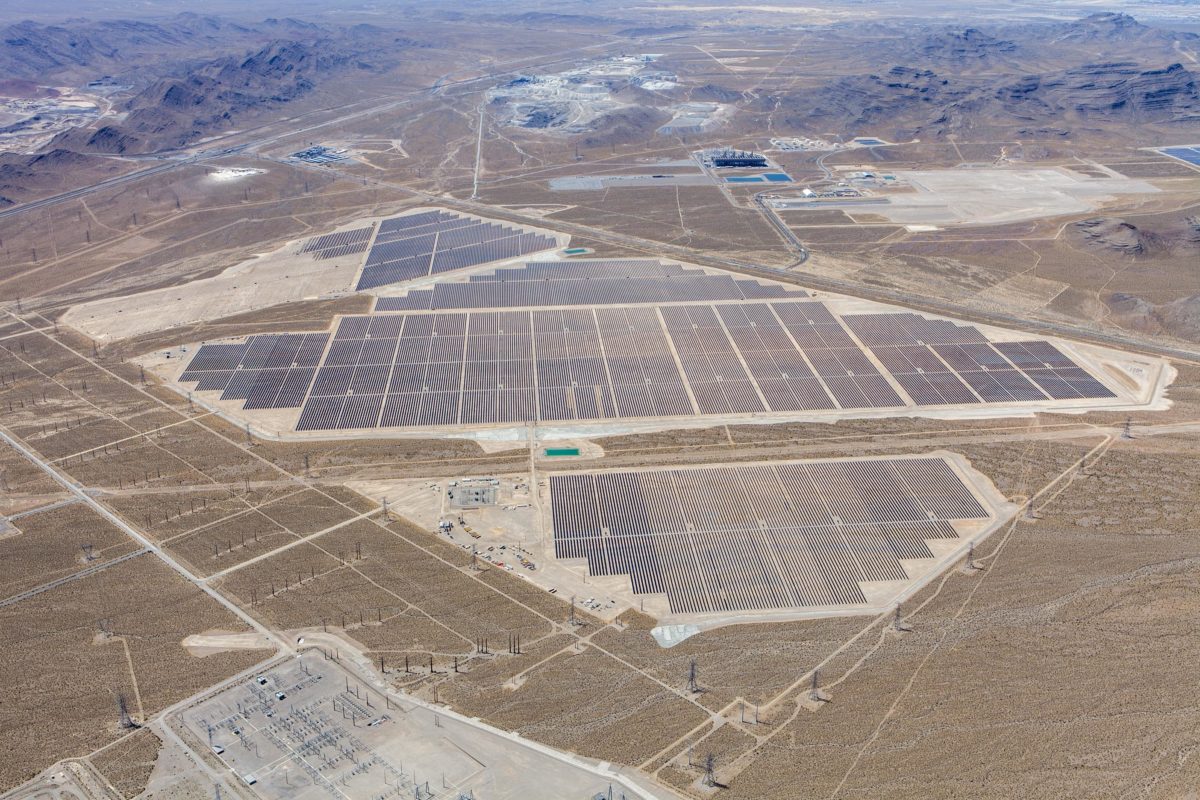The long and winding road has found its end.
The Bureau of Land Management (BLM) yesterday released its Record of Decision, authorizing the Palen Solar Project, a photovoltaic facility owned by EDF Renewable Energy, to occupy up to 3,140 acres of BLM-administered lands, approximately 10 miles east of Desert Center, north of Interstate 10, in Riverside County. The BLM noted that the project will employ 1,000 people at its peak, with 550 onsite doing construction as a peak – and it will spend greater than $1 billion for all aspects of the project.
The project is projected to generate 1.6 terawatt hours each year, an AC capacity factor of 36% (!!) and a DC capacity factor factor of 29%.

The facility was originally submitted in 2007 as a concentrating solar power plant by Solar Millennium, who went bankrupt before final approval. Brightsource Energy bought the rights to the project at auction in 2013, but the company and partner Abengoa Solar abandoned the state proceeding in that year. In late 2015 EDF Renewable Energy acquired Abengoa’s interest in the project and resubmitted it for consideration.
The BLM website offer a huge amount of information on this project, including one package (.pdf) that includes many maps, and layout types related to the project that were required as part of the significant volumes of analysis required to deliver this project. It also included a design package (.pdf) that was submitted about a year ago that shows significant engineering work.

The project requires construction of a 6.7-mile single circuit 230 kilovolt generation interconnection (gen-tie) transmission line connecting the project to the Southern California Edison Red Bluff Substation.
Preliminary drafts of the design package from above note the specific hardware being used. Modules will be mounted on NEXTracker single axis trackers – the SPT specifically. Earlier documentation listed Canadian Solar Diamond CS6X modules, specifying between 310 and 320 watts per panel. Later documents noted that a module up to 390 watts from Canadian solar might be used, but hadn’t necessarily been chosen. And inverters supplied by Power Electronics, the FS1500-CH15 1.25 MW 1500VDC units are listed.
The field of panels consists of repeating blocks of 2.50 MW-AC each. The approximate dimensions of an array block consist of 8,046 panels, separated into four quadrants. Within each quadrant, there would be 25 rows comprised of 27-panel strings. Each block would employ two inverters, 1.25 MW each, set along the access roads, in the middle of the panel array area.
The project noted 400 inverters, and 3,137,940 solar modules.

The scale of the project really comes into focus with the delivery schedule. The solar modules alone, will require 8,210 truck deliveries – 10-12 a day, for 22 months!
The project is forever memorialized in the almost 900 page Supplemental Environmental Impact Statement/ Environmental Impact Report/ Land Use Plan Amendment (.pdf)
Patience pays off it seems.
This content is protected by copyright and may not be reused. If you want to cooperate with us and would like to reuse some of our content, please contact: editors@pv-magazine.com.








Hope they go with the 390W panels to jump up the output another 25%.
Dang that is a big project. We need more of these!
With the nearly 15,000 truck deliveries I wonder how long it will take to be environmentally break even. Of course, that also doesn’t include the 550 construction crew probably also arriving in a pickup alone.
approximate energy (module only) payback:
energy output / y = 1800Wh/W/y * 18%efficient = 324Wh/W/y
energy input cost (module) = 5000Wh/$ electricity cost * 0.2$/W material cost = 1000Wh/W
In / Out = 1000 / 324 = 3years
Where can I get information on where can people interested in working get a application and when can the people apply for a job and it going to be union only or can anybody apply for a job
Contact the construction contractor. I do not know if this will be a union job or not.